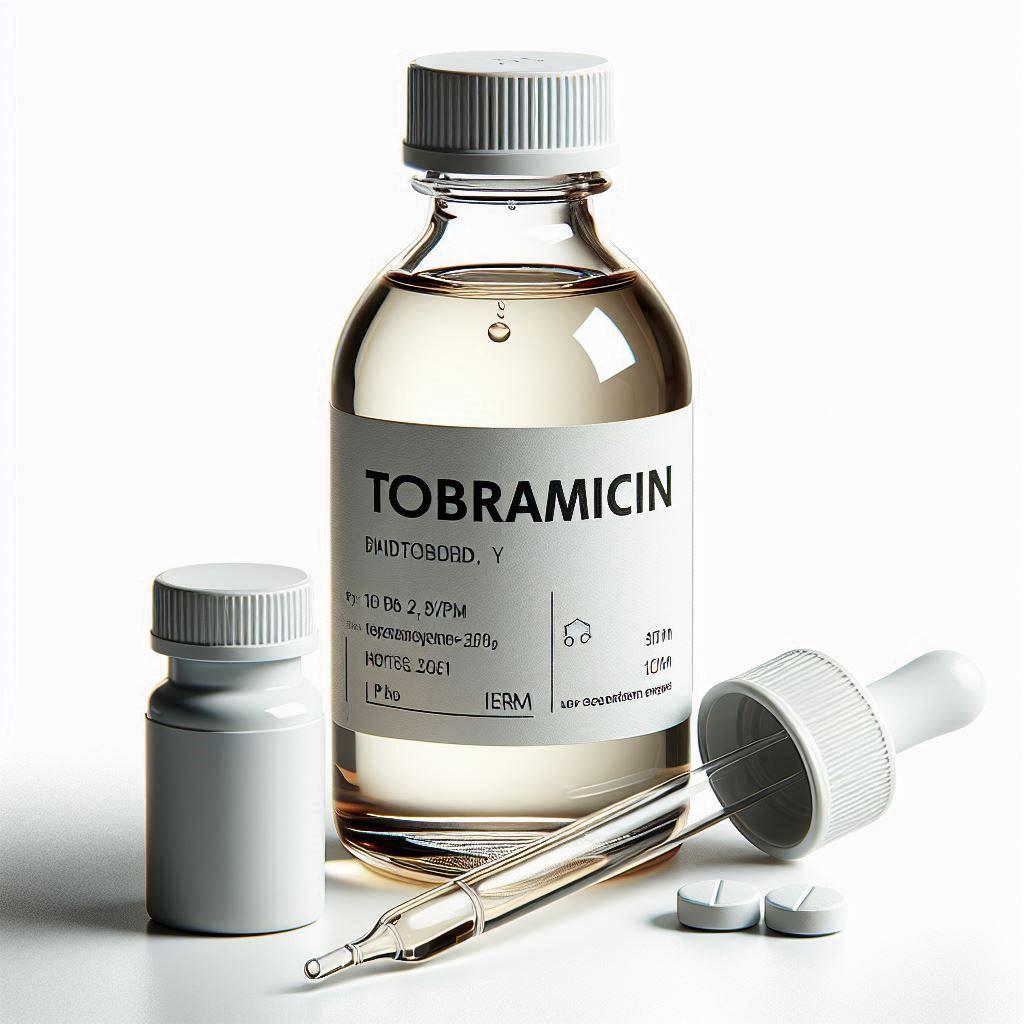
Tobramycin
Description:
Tobramycin is an aminoglycoside antibiotic used to treat various bacterial infections, especially those caused by Gram-negative bacteria. It works by inhibiting bacterial protein synthesis, ultimately leading to the death of the bacteria. Tobramycin is commonly used for serious infections such as pneumonia, sepsis, and complicated urinary tract infections. It is also used in inhalation form for respiratory infections in cystic fibrosis patients.
Available Brand Names (examples include):
- Nebcin
- TOBI
- Tobrex
- Brulamycin
- Tobradex (with dexamethasone)
Available Forms and Strengths:
- Injection (IV/IM): 10 mg/mL, 40 mg/mL
- Eye Drops/Ointments: 0.3%
- Inhalation Solution (for nebulization): 300 mg/5 mL
- Inhalation Powder (TOBI Podhaler): 28 mg/capsule
Uses:
- Severe Gram-negative bacterial infections, such as Pseudomonas aeruginosa, Proteus, Klebsiella, and E. coli.
- Respiratory infections in patients with cystic fibrosis (inhaled tobramycin).
- Urinary tract infections (UTIs).
- Bacteremia (sepsis) and endocarditis.
- Bone and joint infections.
- Intra-abdominal infections (e.g., peritonitis).
- Eye infections (conjunctivitis, keratitis).
Side Effects:
- Nephrotoxicity (kidney damage), especially with prolonged use.
- Ototoxicity (hearing loss or balance issues), affecting high-pitched sounds.
- Dizziness or vertigo.
- Muscle weakness.
- Local reactions at the injection site.
- Bronchospasm when used in inhalation form.
- Allergic reactions (rash, itching).
Dosage:
- Adults:
- IM/IV dose: 3-5 mg/kg/day divided into 2-3 doses.
- For once-daily dosing, 5-7 mg/kg can be used for certain infections.
- Inhalation (cystic fibrosis): 300 mg inhaled twice daily for 28 days, followed by a 28-day break.
- Pediatric: Weight-based dosing similar to adults, with close monitoring for toxicity.
- Eye drops/ointment: 1-2 drops every 4 hours, depending on infection severity.
Contraindications:
- Hypersensitivity to tobramycin or other aminoglycosides.
- Renal impairment (dose adjustments required).
- Myasthenia gravis (can exacerbate muscle weakness).
- Pregnancy (use with caution, potential fetal harm).
Drug Interactions:
- Other nephrotoxic drugs (e.g., vancomycin, NSAIDs, amphotericin B) – increased risk of kidney damage.
- Loop diuretics (e.g., furosemide) – increased risk of ototoxicity.
- Neuromuscular blocking agents – may increase the risk of muscle paralysis.
- Cisplatin – may increase nephrotoxicity risk.
Warnings/Precautions:
- Monitoring kidney function and hearing tests are essential throughout treatment, especially in patients with risk factors for toxicity.
- Regular monitoring of drug levels (peak and trough) is recommended to ensure therapeutic effectiveness and prevent side effects.
- Use cautiously in elderly patients, as they are at higher risk for toxicity.
- Inhaled tobramycin may cause bronchospasm, so it should be used with caution in patients with lung disease outside of cystic fibrosis.
Doctor’s Advice:
- Follow the prescribed dosage and administration schedule.
- Be aware of early signs of toxicity, such as hearing changes, dizziness, or reduced urine output, and inform your doctor immediately if these occur.
- Complete the full treatment course to avoid bacterial resistance.
- Avoid using other nephrotoxic or ototoxic drugs unless advised by a healthcare provider.
Would you like further details on its use for specific infections or its inhalation therapy in cystic fibrosis?






